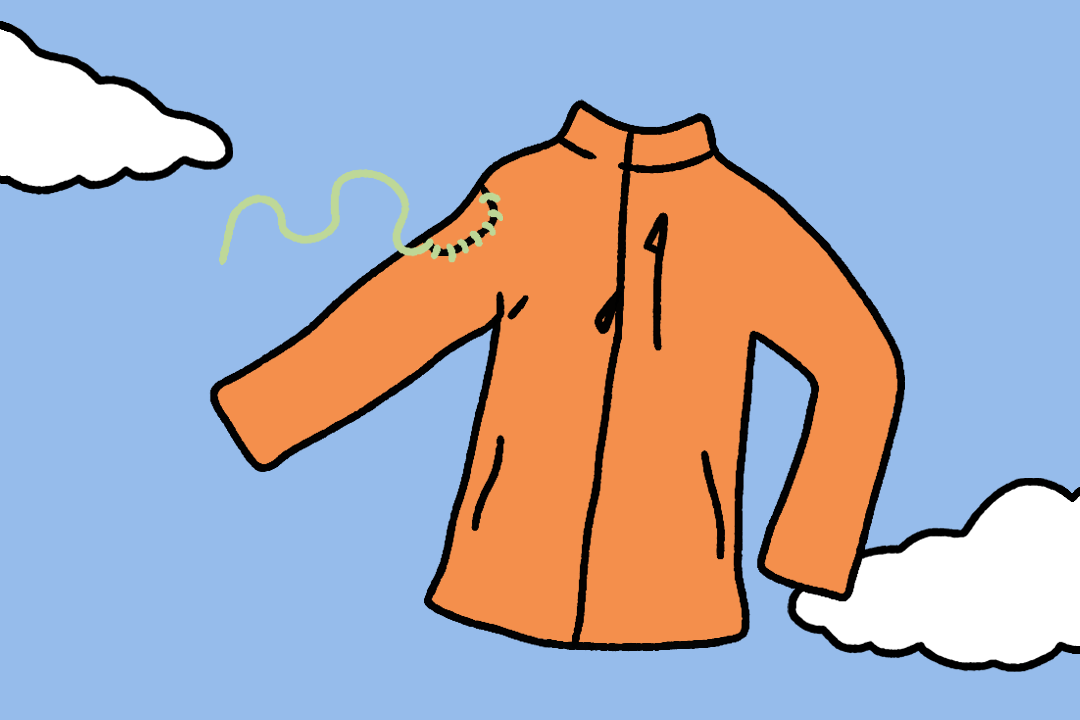The Best Winter Jackets for Every Weather
Winter Jackets | October 1, 2025
SAIL
December 5, 2022

Have you ever unearthed a box of clothes to discover an improbable piece of clothing at least as old as you that is still as beautiful as back in the day? You can thank the people who bet on quality clothes and took care to maintain them over the years!
While today we consume clothing like our ancestors did potatoes, we have a lot to relearn to reduce the impact of our (over)consumption of clothes. And good news, choosing and cherishing your wardrobe just might become a climate superpower!
It’s not self-evident, but it can be learned and that is what we suggest you discover in this article!
This article was produced in collaboration with Earth Day Canada. 
In this article, you will learn more about:
Before maintaining and taking care of clothing, it is necessary to buy less and better! This is the essential step that should not be overlooked if you want to sustainably control the impact of your wardrobe and opt for equipment that will age with you.
To shop well, find out about brands and their practices. Remember that by buying a brand’s products, you support its business model – and this is not a trivial power!
At a time when we have the reflex of buying quickly, forcing ourselves to take the time to choose well is essential. It is tempting to save immediately by betting on the low price, but you will realize that… it does not add up! So bet on better quality and say goodbye to fast and disposable fashion.
Some brands are also there to help you and they make a lifetime commitment to their equipment by allowing you to repair your clothes for free or at a lower cost. This is a revolution for the textile industry: the objective is no longer to push you to buy a lot and often, but less and for a long time. Encourage these initiatives, they are perfect for your most expensive purchases: winter coats and boots, outdoor equipment, technical clothing.
For everyday clothing, local or second-hand purchases are preferred, while also considering the composition of the piece, which is the first guarantee of quality.
Do you usually look at the composition of the items you buy? This is THE behaviour to adopt! Each material or fabric has different properties and appropriate maintenance methods. Knowing them makes it possible to predict the durability of the clothing and to prolong it. It is pretty simple:
When the time comes to choose, the goal is quite simple: aim for “100%” and naturalness.
A “100%” fabric, made of a single material, is preferable because fibre blends tend to last less: the most fragile material wins out and will deform or damage the entire garment. With mixed materials, you also increase the risk of errors in washing or drying, as some compositions are not intended to last. Little bonus: a 100% fibre is a fibre that is more easily recycled, a real issue in our textile consumption!
Then, aim for “natural” because nature is made to last, and you can observe this in clothes! With little transformation, natural materials are resistant, easier to maintain and repair, and require less washing. They are surprisingly versatile with astounding temperature regulating properties. Little bonus : they reduce microplastic and chemical pollution in laundry water, a little-known consequence of our artificial and synthetic fibres.
In terms of clothing care, remember the acronym WDS: Washing, Drying, Storing. These are the three points of vigilance to memorize and put into practice.
To help you, your best ally is the label of your garment, so please don’t cut it! On it are written your precious maintenance instructions in bizarre symbols and in several languages.

Hand wash, cold wash, dry clean, tumble dry or flat dry, spin dry, iron, products to use: it’s all there, you just have to know how to decipher the symbols. Use your favourite search engine to familiarize yourself with these symbols. A few essentials:
Remember that it is with practice that we get to know our clothes, the materials that best suit our uses and the quality manufacturers. So, take the time to familiarize yourself with this!